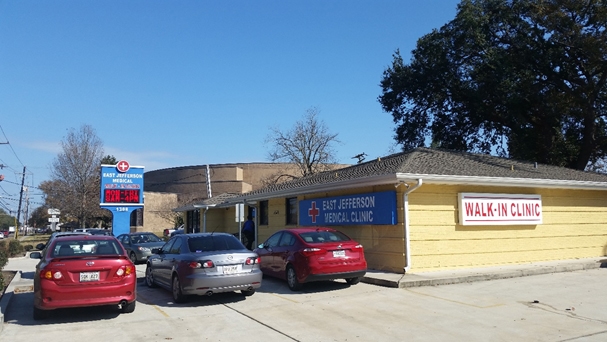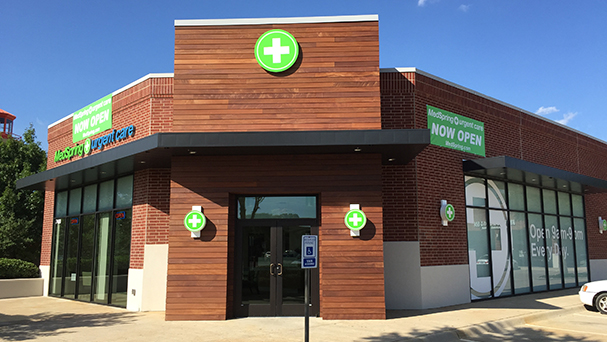Published on
URGENT MESSAGE: Urgent care’s value proposition is “access,” which includes walk-in availability whenever patients have a medical need. However, could using some minimum operating hours as a defining feature of “urgent care” unintentionally restrict access for tens of millions of Americans living in historically underserved communities with population density insufficient to support opening seven days per week and 3,000 hours per year?
Alan A. Ayers, MBA, MAcc is Practice Management Editor of JUCM—The Journal of Urgent Care Medicine, a member of the Board of Directors of the Urgent Care Association, and Vice President of Strategic Initiatives for Practice Velocity.
The Ohio State University Medical Center opened its second suburban outpatient facility in July 2015, to provide after-hours care for “non-life threatening injuries, colds and flu, and stitches, splints and urgent x-rays.” But when reporting on this event, Columbus Business First advised its readers “just don’t call it urgent care” because, despite this center’s walk-in practice model and scope of services, it was open only nights and weekends and not the 3,000 hours per year required for Urgent Care Association (UCA) certification.(1)
UCA has put forth “certification and accreditation standards” that include, among others:(2)
- Accepting walk-in patients during all hours of operation
- Being open no less than 3,000 hours per year, 7 days per week, for at least 4 hours per day open
- Basic x-ray services onsite
- Phlebotomy services onsite
- Accepting patients of all ages (an exception is made for pediatric-only urgent care centers when it is evident to the consumer that the center serves the pediatric population only)
- An active medical director
- A provider on-site at all times with ability to read an x-ray, perform minor procedures (such as laceration repair and splinting fractures), and ability to administer oral and IM medications and IV hydration
All of these factors have to do with assuring the quality delivery of walk-in medical services—except for hours of operation. As a result, Ohio State has chosen to call its new facility “OSU AfterHours Care,” which is yet another term, along with urgent care, walk-in center, retail clinic, and freestanding emergency department, that prospective patients will need to learn and differentiate. By using minimum operating hours as a defining feature of urgent care, in this case, the industry inadvertently created another class of medical facility and has potentially excluded a potential member constituent.
Urgent Care as “Access”: Inclusion vs Exclusion
Urgent care is a volume-driven business, meaning that once a center’s fixed operating costs and minimum staffing expenses are covered, each additional patient through the door contributes directly to the center’s bottom line. This means that the most profitable centers are those with the highest volumes. Because attaining high volumes requires a heavy density of population that conventionally utilizes urgent care services, historically urgent care centers have thrived in the affluent suburbs of major metropolitan areas where privately insured families place a price-premium on convenience. “Volume-driven” also means that urban and rural areas without sufficient density of insured populations are unable to support the urgent care business model.
Urgent care is supposed to be about “access” (which is also the guiding principle of the Patient Protection and Affordable Care Act of 2010). By promoting a business model that can only function profitably in the affluent suburbs of major cities whose privately insured populations will support extended hours, could including operating hours as a defining feature of urgent care be restricting urgent care access to tens of millions of historically underserved Americans living in urban and rural areas (many of whom are minority and/or poor)?
Providing ‘Urgent Care Services’ During All Hours of Operation
By many accounts, urgent care is a retail delivery model for general medicine. Yet there is no other retail business to my knowledge in which operating hours are a defining characteristic. Apply the “hours argument” to a different context and the logic that opening hours somehow define the business becomes ridiculously silly.
Many fast food outlets are open 24 hours, one McDonald’s near my house among them. The nearby In-n-Out Burger closes at 2:00 am. Chick-fil-A closes at 10:00 pm and is not open at all on Sunday. Let’s say the local McDonald’s franchisee, to defend his/her investment in being open 24 hours, were to drive “industry standards” defining fast food as 24-hour access. If those standards were adopted, would the latter two still not be “fast food” during the hours they’re open?
Likewise, there are hundreds of walk-in medical facilities that are not open 3,000 hours per year or 7 days a week providing services that otherwise meet the UCA accreditation/certification criteria to their patients during the hours they are open. In fact, studies and anecdotal evidence clearly demonstrate that the greatest hours of urgent care utilization are not during evenings, weekends, or holidays when primary care is unavailable, but rather during weekday mornings. According to a 2015 consumer utilization study by Sparks Research, 58% of consumers prefer to visit an urgent care center between 8:00 am and 2:00 pm, with only 14% expressing a preference for visiting after 5:00 pm.(3)
Can Minimum Operating Hour Requirements Create ‘Urgent Care Deserts?’
Consider the availability of “urgent care” services in Kenner, LA, a working class suburb of New Orleans near the Louis Armstrong New Orleans International Airport that demographically skews heavily minority and below average household incomes. One block apart from one another on Williams Avenue sit two urgent care providers—East Jefferson Urgent Care, operated by a physician-entrepreneur, and a corporately owned Concentra Urgent Care. The former is open Monday–Friday, 8 am to 4 pm and the latter is open Monday–Friday, 8 am to 5 pm. Both are closed on weekends. During the business hours of these two centers, both provide urgent care services to this neighborhood.
Given the high concentration of Medicaid patients, high poverty rate, and thin population density, if extended evening/weekend hours were an absolute requirement of urgent care, these two providers likely could not operate profitably in this part of Kenner, and the neighborhood’s residents would have to travel to a more affluent, more densely populated area in Metairie, LA—approximately 6 miles away—for urgent care.
While social activists would describe the lack of availability of other retail services like chain supermarkets as creating “healthy food deserts,” would enforcing operating hours as a standard for urgent care likewise create “urgent care deserts” in communities like Kenner?
Exhibit 1: Comparison of Demographics Enabling Evening/Weekend Hours for Urgent Care
Urgent care is a volume-driven business, meaning that its profitability is determined by the number of patients treated. In order to profitably operate during extended evening and weekend hours, a sufficient density of population must be available to utilize the center during those hours. Understanding the demographic differences between Kenner, LA and Irving, TX can explain why one community can support a corporate model with 7-day, extended-hours operations and the other cannot.
Kenner, LA

East Jefferson Walk-in Clinic, located in the working class New Orleans suburb of Kenner, LA is open Monday–Friday, 8 am to 4 pm, and is owned by physician Quynh M. Mai, MD. Average household income in the center’s zip code is $34,151. Just 8.2% of residents have a Bachelor’s degree or higher; the unemployment rate is nearly twice that, at 16.2%. Population density is 2,393 residents per square mile, of which 60% are African-American or Hispanic/Latino. The median detached home price is $156,357.
Irving (Las Colinas), TX

MedSpring Urgent Care, located in the master planned community of Las Colinas in Irving, TX, boasts 7-day, 9 am to 9 pm operating hours. MedSpring has over 30 locations and is owned by Fresenius Health Care, the $27 billion German dialysis and renal care services conglomerate. Average household income in the center’s zip code is $65,857; 64.6% of residents have a Bachelor’s degree of higher. Unemployment is reported at 5.3%. Population density is 2,356 residents per square mile, of which 26% are African-American or Hispanic/Latino. The median detached home price is $474,373.
In addition, by focusing on operating hours instead of clinical capabilities as the defining characteristic of urgent care, the urgent care industry risks alienating independent doctors like Dr. Quynh M. Mai, who operates this East Jefferson Urgent Care, in favor of health systems and large, private equity-backed entities with sufficiently deep pockets to invest in 3,000 operating hours per year. Is it pro-patient, pro-physician, or even pro-social for a medical association to create definitions that put corporations ahead of doctors?
The Business Viability of Urgent Care Depends on Getting Paid for Urgent Care Services
Urgent care centers incur operating costs that don’t exist in conventional primary care practices, including retail rents for convenient/visible locations, staffing the ebb and flow of walk-in traffic (vs more predictable scheduled appointments), marketing costs to raise awareness among prospective patients, and a level of equipment and supplies sufficient to triage whatever medical condition might walk through the door. Understanding these contributors to urgent care’s high operating costs and the value an on-demand model provides payers in reducing emergency room utilization, many insurance companies offer “urgent care contracts” that typically reimburse more than primary care for the same billing codes. Net revenue per visit in urgent care typically ranges from $135 to $165, whereas in primary care reimbursement is closer to $75 to $95 per visit.
One intention of industry accreditation/certification standards is to provide payers a definition and clarity as to what constitutes “urgent care.” But if 3,000 operating hours per year were required by payers in order for a center to be contracted as “urgent care,” then centers in areas lacking sufficient density to support the extended hours operating model would be forced to accept primary care rates. If a walk-in medical center could not survive financially under primary care reimbursement, then such only exacerbates concerns over minimum operating hours creating “urgent care deserts.”
What Should Matter Is Scope of Service, Not Operating Hours
While urgent care owner–operators who have invested in extended operating hours are reasonable in their desire to set minimum operating standards in defense of their business model, the challenge is that by doing so, the industry’s focus shifts away from the safe and effective delivery of clinical services to the retail elements of business operations.
Urgent care meets a need for on-demand treatment of minor illness and injury that patients feel require immediate medical attention but that do not constitute medical emergencies. While after-hours availability can be considered an important component of access, these conditions can and do occur at any time, and consumer preference has actually been to use urgent care during weekday mornings (as opposed to nights/weekends). Thus, urgent care can be delivered any time of day. In this author’s opinion, the risk that minimum operating hours will limit access in rural and urban areas is greater than the benefits of assuring consistency in the nonclinical, business aspects of the operation.
References
- Columbus Business First. Ohio State Opening Another Urgent Care—But Don’t Call It That. July 1, 2015. Available at: http://www.bizjournals.com/columbus/news/2015/07/01/ohio-state-opening-another-urgent-care-but-dont.html. Accessed July 17, 2015.
- Urgent Care Association Certified Urgent Care (CUC) Program. Available at: http://www.ucaoa.org/?CUC_overview. Accessed July 17, 2015.
- Merchant Medicine, Sparks Research, and DMX Consulting. Patient and Customer Perspectives on Walk-in Medicine.

